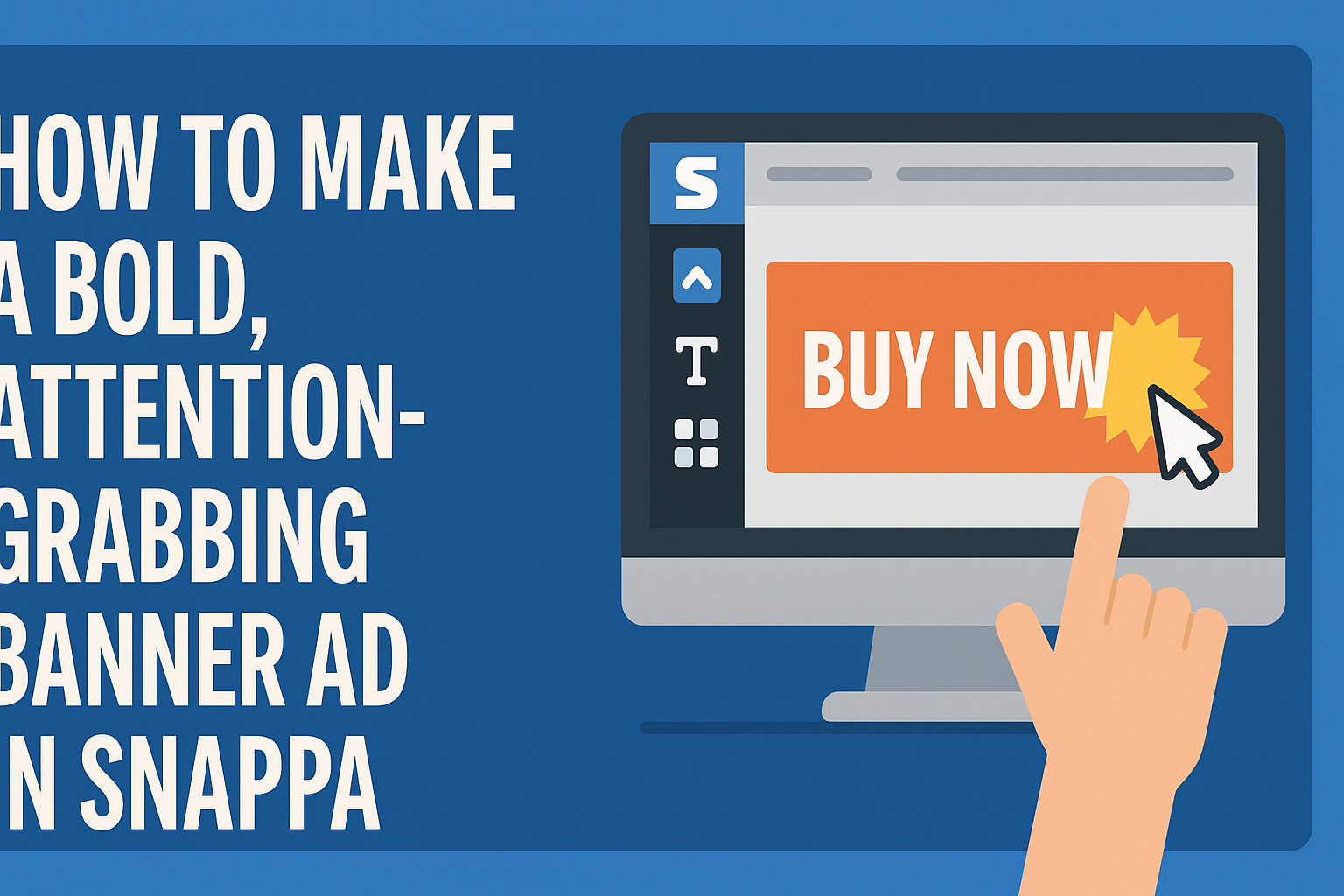Creating a banner ad that stands out can be a game changer in capturing attention online. With Snappa, designing a bold and eye-catching banner is not only easy but also fun.
This online tool offers a variety of templates and customization options that can make any ad pop.
In just a few clicks, anyone can select from professionally designed templates tailored to different sizes and styles.
Whether for social media or webpage banners, Snappa provides the perfect starting point, allowing users to focus on their message without getting lost in the design process.
The process becomes even more exciting with the opportunity to add personal touches and unique visuals.
With this guide, readers can learn how to make their banner ads not just visually appealing, but also effective in driving clicks and engagement.
Understanding Banner Ad Basics
Creating a successful banner ad starts with understanding its core elements. Knowing the ad’s purpose and the audience is essential for effective design and messaging.
Defining Your Ad’s Purpose
Before creating a banner ad, it’s important to define its main goal. Is it to promote a product, increase brand awareness, or drive traffic to a website? Each purpose requires a different approach.
For example, if the ad’s goal is to promote a sale, the design should clearly highlight discounts or special offers. Conversely, a brand awareness campaign might focus on showcasing the brand’s logo and values.
A clear purpose helps in crafting relevant content, guiding images, and selecting appropriate calls to action. Keeping the objective in mind will streamline the design process and enhance effectiveness.
Knowing Your Audience
Understanding the target audience is key to designing an effective banner ad. This includes knowing their age, interests, and spending habits. Tailoring the ad to meet these needs makes it more engaging.
For instance, bright colors and fun graphics may appeal to younger audiences, while a sleek, professional design might attract business professionals.
Consider where the ads will be placed too. Are they on social media, blogs, or online magazines? Knowing the platform can inform the style and tone of the ad. Engaging the right audience increases the chances of capturing their attention and achieving the ad’s goal.
Designing in Snappa
When creating a banner in Snappa, the design process involves several key steps. The choices made during this phase can greatly impact how the final product looks and feels. Here are the essential elements of designing a stunning banner.
Choosing the Right Template
Snappa offers a variety of pre-designed templates suitable for different needs. Users can start by selecting a category, such as social media or advertisements. This saves time and ensures the dimensions are correct.
Each template comes with its own unique layout. By choosing one that aligns with the intended message, the design process becomes easier and faster.
Snappa even allows users to preview how the banner will look across various platforms.
Customizing Your Banner Graphics
Once a template is selected, customizing graphics is the next step. Snappa provides easy-to-use tools for this. Users can upload their own images or choose from a library filled with high-quality graphics.
It’s important to select visuals that connect with the target audience. Using clear and vibrant images can enhance the banner’s appeal.
After selecting graphics, resizing and repositioning them is simple with the drag-and-drop feature.
Selecting Fonts and Colors
Choosing the right fonts and colors plays a crucial role in the banner’s design. Snappa offers a range of font styles to fit any brand voice. Pairing these fonts effectively enhances readability and attractiveness.
Color selection is equally important. Colors can evoke emotions and set the mood. Users should choose a color scheme that aligns with the brand identity.
Snappa allows quick adjustments to colors, helping refine the design.
Adding Text Effects
Text effects can make a banner stand out even more. Snappa provides options for shadows, outlines, and placements. These effects can emphasize key messages and grab attention.
When adding text effects, consistency is key. Users should ensure that the effects do not overwhelm the overall design. Striking a balance will help maintain clarity while still making the banner eye-catching.
Finalizing Your Banner
Finalizing a banner is about perfecting the design and ensuring it meets all necessary requirements. This stage includes adding brand elements, optimizing for various platforms, and previewing the final product for any tweaks.
Incorporating Brand Elements
Using brand elements in a banner makes it recognizable and builds trust. This includes the brand’s logo, colors, and fonts.
To start, the logo should be placed in a prominent location. This could be the top corner or centered, depending on the design.
Next, the color palette must align with the brand’s identity. It’s helpful to use 2-3 main colors that are consistent across all marketing materials.
Fonts are also crucial. Choosing a font that matches the brand’s personality helps create a cohesive look, making it easier for viewers to connect with the message.
Optimizing for Different Platforms
Different platforms have varying requirements. It’s important to design banners that fit those specifications for the best results.
For example, banners for social media should be sized correctly to prevent cropping or distortion. Each social media site usually has its own recommended dimensions.
Also, consider file formats. JPEG is great for images, while PNG is ideal for graphics with text.
Testing the banner on different devices, like mobile and desktop, ensures it looks good everywhere. Changing elements to fit these formats can greatly enhance engagement.
Previewing and Revising
Previewing the banner is a critical final step. This allows for spotting any issues before launching.
Look for typos, layout problems, or anything that seems out of place.
A second set of eyes can be helpful. Asking a friend or colleague for feedback might bring attention to details that were previously overlooked.
Once any necessary changes are made, it’s time to check the overall look. Make sure the banner is attractive and the message is clear.
Revise it until it meets the desired standard.

